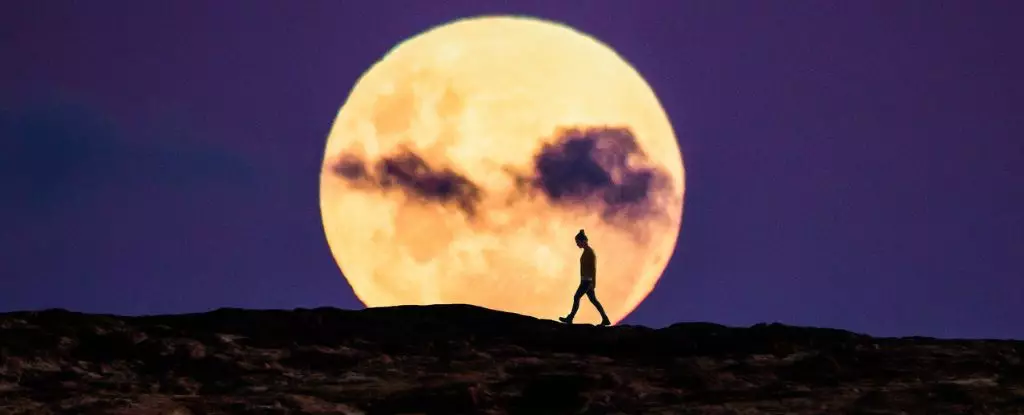This week, skywatchers will be treated to a stunning astronomical phenomenon—the year’s largest supermoon, known as the Hunter’s Moon. This event is set to unfold between Tuesday evening and Friday morning, allowing ample opportunity for enthusiasts and casual observers alike to witness the spectacle. However, those keen on experiencing the moon at its most resplendent should mark their calendars for a specific window: the night of Wednesday and into Thursday morning, when the moon will be at its closest approach to Earth, showcasing its greatest luminescence.
The enchanting term “supermoon” refers to the occurrence of a full moon or a new moon that coincides with the moon’s proximity to Earth at a point known as perigee. During these celestial events, the moon appears significantly brighter and larger than its average size. This week’s supermoon holds particular significance as it is projected to be about 14% brighter than a typical full moon, creating an awe-inspiring scene for observers globally. At its closest, the moon will be approximately 221,938 miles away from Earth—nearly 17,000 miles closer than it usually is.
Optimal Viewing Conditions
For optimal viewing of this breathtaking phenomenon, astronomers recommend observing the moon at moonrise on either Wednesday or Thursday. During these moments, when the moon is juxtaposed with terrestrial features such as trees and buildings, a unique optical illusion takes effect, making the moon appear larger and more striking. Such visual enchantment is not merely anecdotal; it has been substantiated by countless viewers who have taken in the grand spectacle of the Hunter’s Moon. Those eager to catch the exact time of moonrise can utilize various online tools, like moonrise and moonset calculators, to determine when to look toward the eastern horizon.
While the supermoon is easily accessible to everyone, amateur astronomers are encouraged to enhance their experience by observing through a telescope. The increased detail visible through a telescope can transform the viewing experience from ordinary to extraordinary. As one local astronomer noted, sharing this moment with others while gazing through a telescope adds a delightful element of camaraderie to the event.
This Year’s Noteworthy Supermoon Series
Remarkably, this supermoon is the third in a series of four consecutive supermoons observed this year, with the next one expected in November. It stands out as the largest supermoon of the year, eclipsing the previously enjoyed features from September, adding yet another layer of excitement for lunar enthusiasts. The Hunter’s Moon, specifically, is steeped in historical significance, deriving its name from the period when wildlife preparations for winter culminate, triggering hunting activities.
Looking Ahead: Future Supermoons
Although missing this week’s celestial grandeur may seem disheartening, there’s no need for despair. Supermoons are relatively frequent events, and admirers can look forward to additional occurrences in the near future. Supermoons typically group together within a short timeframe; thus, keeping an eye on lunar cycles can ensure that enthusiasts don’t miss out on future displays. Interestingly, while some supermoons can coincide with new moons, which may inhibit visibility, the instances this year have been fortuitous, as all were full moons.
As we await this week’s luminous supermoon, it’s essential to acknowledge the wonder and beauty of our celestial neighbors. The Hunter’s Moon is not just a visual delight but serves as a reminder of the intricate dance of celestial bodies that governs our natural world. Whether through a telescope or simply by gazing upward, the experience of witnessing the supermoon could be both humbling and inspiring. So, take a moment to step outside, look up at the sky, and embrace the magic of the universe unfolding before you.

